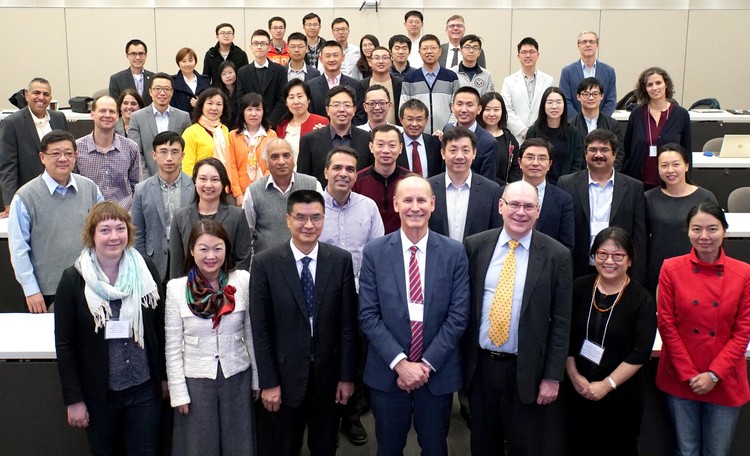Seven new joint energy projects with Tsinghua University
Posted on
Participants at the October 2017 joint Tsinghua-University of Alberta workshop.
U of A researchers will receive funding to send students to China’s leading research intensive university
The University of Alberta and Tsinghua University have announced the first seven energy research projects launched under their new $1.2 million CAD joint Collaborative Research Fund. Each project matches a Principal Investigator from the U of A with one from Tsinghua, with each institution committing seed grants of $30,000 per project over 18 months.
At the University of Alberta, the selected Principal Investigators and projects are:
- Zhehui Jin - Research on interfacial control of solid state lithium batteries
- Amy Kim - Traffic signal control methods based on deep reinforcement learning
- Amit Kumar - Current availability assessment of biomass resource in China and Canada and the potential for bilateral biomass trade to develop biomass co-firing in Chinese coal power plants
- Huazhou Li - Use of electrical heating to remove condensate banking in the near-wellbore region of shale condensate reservoirs
- Michael Serpe - Supramolecularly crosslinked microgels for heavy metal sensor fabrication
- Tong Yu - A mechanistic study on sulfur cycle associated with sewer biofilms – its occurrence, impacts and control
- Hao Zhang - CO2 adsorption mechanism of potassium promoted hydrotalcite and its application in high purity hydrogen production
Future Energy Systems, the U of A’s $75-million, federally-funded research initiative will administer the projects for the Canadian university. The program’s Director, Larry Kostiuk, explains the significance of the new collaborations: “Tsinghua University is China’s leading research intensive institution, and the U of A is one of the world’s leading energy research universities. With these projects we are strengthening and deepening our long-standing research relationship.”
The seed grant funding will primarily be used to support student mobility, giving graduate students in both countries the opportunity to travel to their counterpart institution in order to study, conduct research, and gain experience. At least one joint publication is expected from each project.
“International relationships develop over time,” Kostiuk continues. “By giving our students the opportunity to experience research at Tsinghua, and by providing Tsinghua students similar access here, we help forge relationships that can lead to even larger-scale partnerships in future.”
After two decades of collaboration, the University of Alberta and Tsinghua University signed an agreement to launch the Joint Research Centre for Future Energy and Environment in April 2017. Later that year, a joint workshop hosted at the U of A identified priority research areas which formed the basis for the Collaborative Research Fund’s 2018 call for proposals.
At the University of Alberta, five of these projects will be funded through Future Energy Systems, while two others are directly supported by the Vice-President (Research) office. A second joint call for seed grant proposals will take place in the spring of 2019, launching another group of 18-month, student mobility-focused energy research projects.